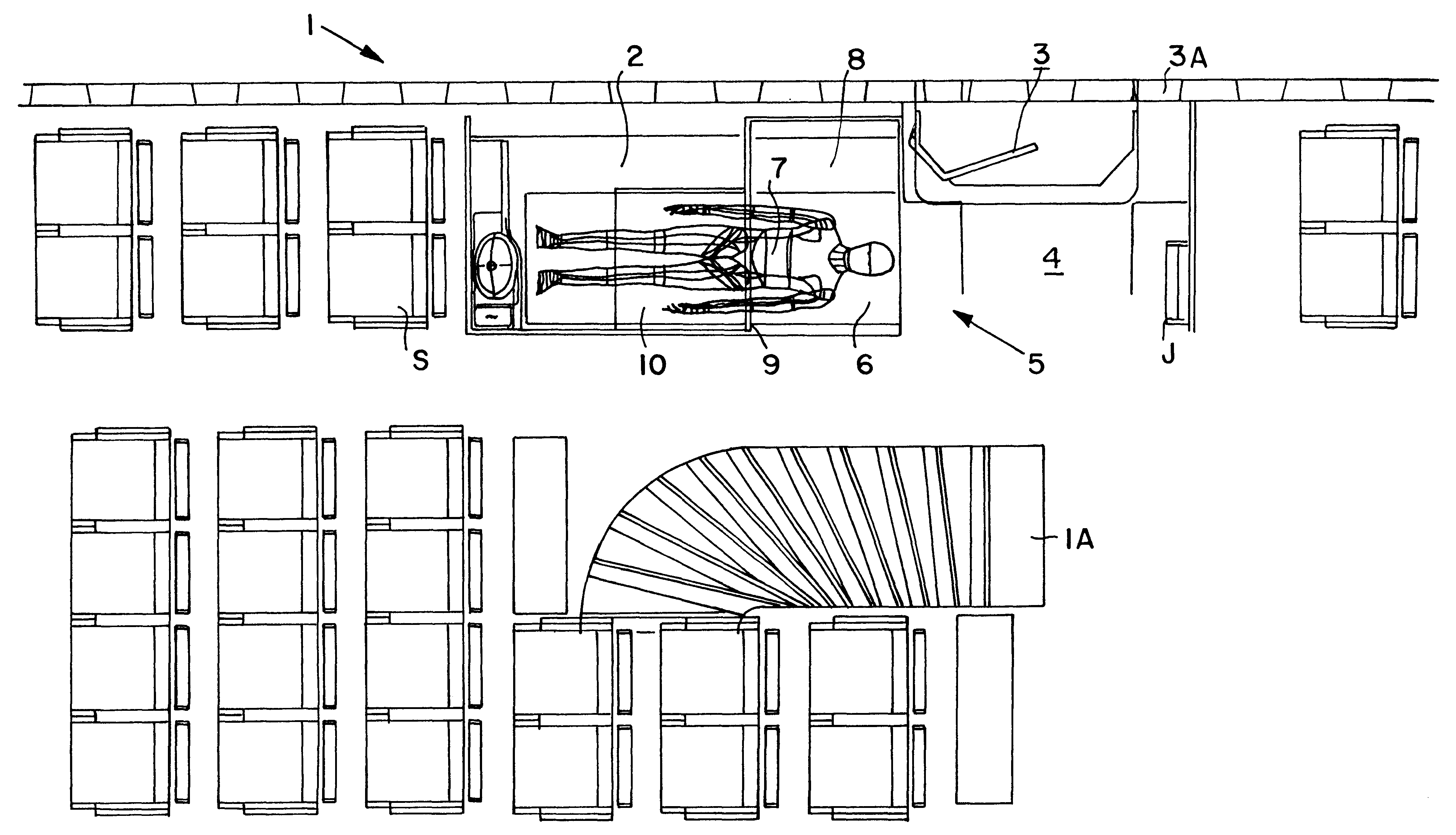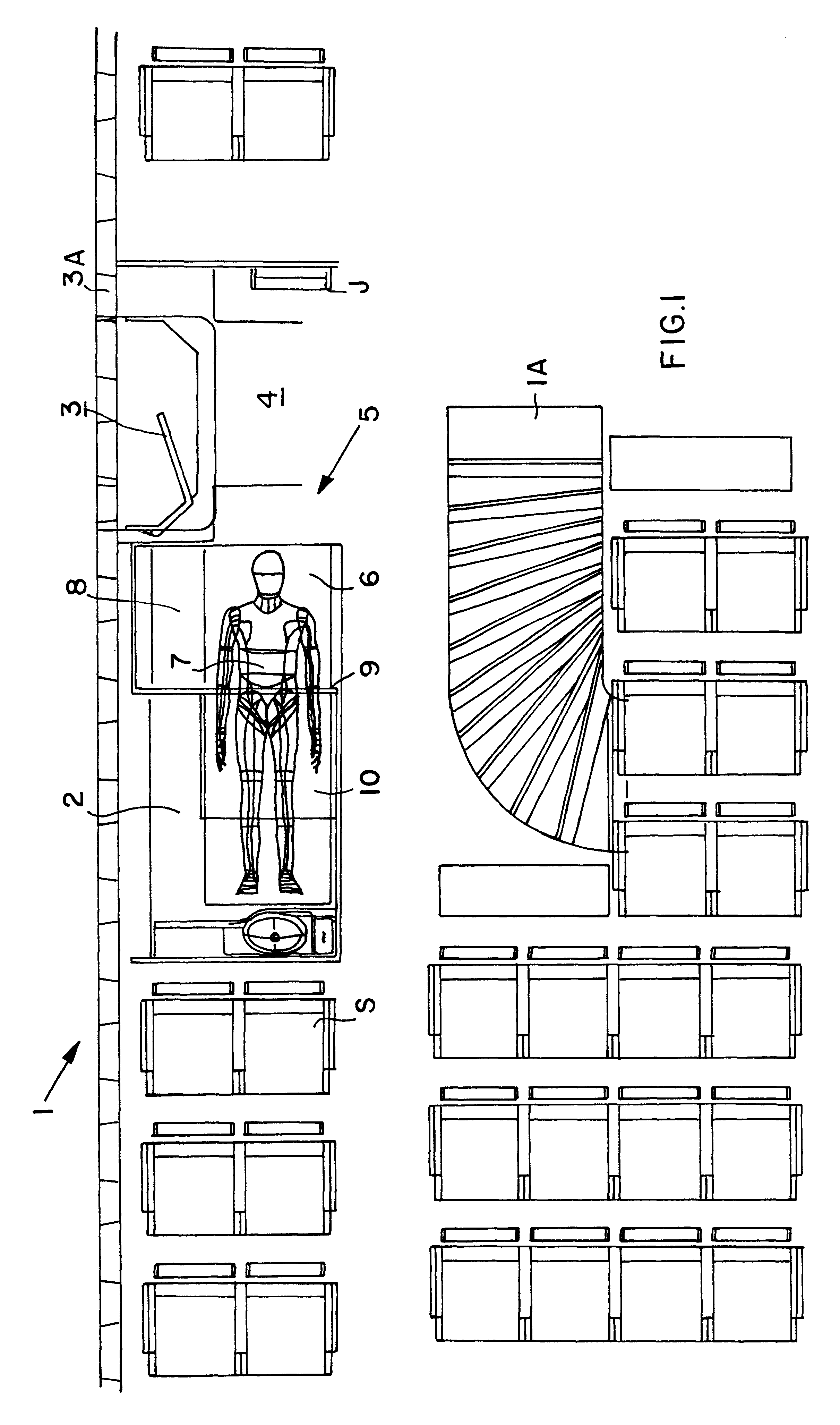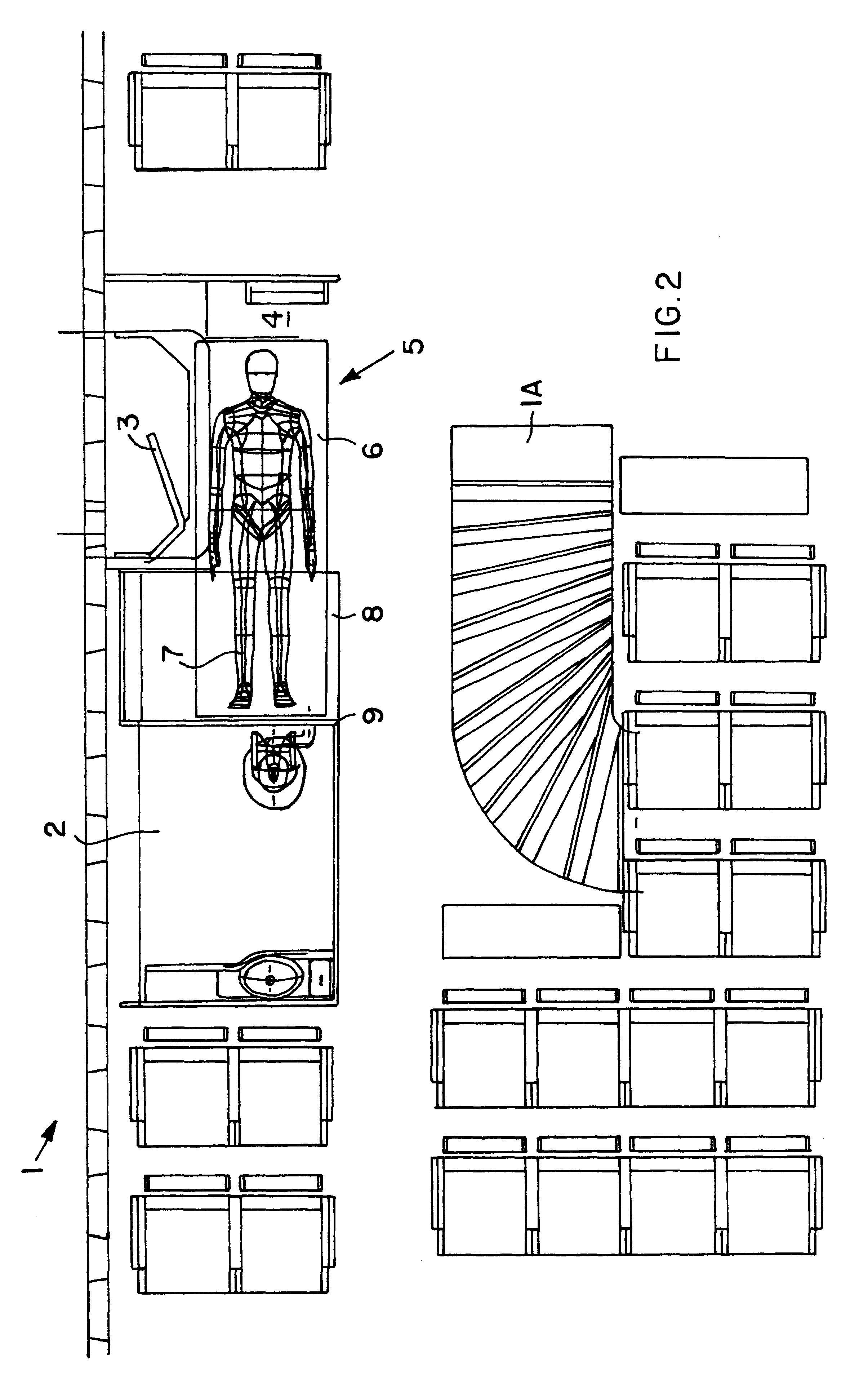Patient transport arrangement in an aircraft
- Summary
- Abstract
- Description
- Claims
- Application Information
AI Technical Summary
Benefits of technology
Problems solved by technology
Method used
Image
Examples
first embodiment
FIG. 5 is a perspective view of the patient transport unit 5 shown in FIG. 1. The door of the restroom 2 is shown open, or has been omitted for the sake of illustrative clarity, while the fold-down element 10 of the endwall 9 of the restroom 2 has been folded down and is supported on legs 10' for receiving the patient stretcher 6 thereon. Thus, an easy access to the patient 7 is provided through the open doorway of the restroom 2, as well as through the open area outside of the restroom 2 on top of the storage compartment 8. The patient 7 can be oriented on the stretcher 6 so that the portion or area of the body of the patient requiring the most easy access is positioned either inside or outside of the restroom 2, depending on the medical needs at hand. Also, the fold-down element 10 of the endwall 9 has a width and height, at a minimum, that are sufficient to allow the stretcher 6 and patient 7 to pass through the opening provided thereby. Moreover, for improved access to the patie...
second embodiment
FIG. 3 shows a patient transport unit 5 according to the invention. The restroom 2 is arranged directly adjacent to the aircraft door 3 and bordering on the doorway clearance area 4, without any space therebetween. There is no storage compartment 8 provided between the restroom 2 and the passage and clearance area 4, so that such a storage compartment 8 is not available for supporting the stretcher 6 thereon. Instead, shifting the restroom 2 in this manner has made space for an additional row of passenger seats S in the passenger cabin 1. In this embodiment, during flight the stretcher 6 is received and supported partially in the doorway clearance area 4 and partially in the restroom 2, and extends through the opening provided by the fold-down element 10 of the endwall 9 of the restroom 2. It is also possible, that both endwalls of the restroom 2 in the aircraft lengthwise direction can be folded down to allow the stretcher 6 to pass through both endwalls if need be, for example for...
third embodiment
FIGS. 7 and 8 show a patient transport unit 5. Rather than having the typical dimensions of a normal aircraft restroom or a handicapped accessible restroom, the useable compartment 12 has such dimensions that it can receive or house a patient stretcher 6 completely therein, and also includes a toilet 11 therein. This special compartment 12 combining a toilet 11 with a patient transport unit 5 can be arranged directly next to the aircraft door 3, and adjoining or bordering on the doorway clearance area 4.
FIG. 7 shows the compartment 12 with an open or omitted door for the sake of clarity. If it is not necessary to transport a patient on a given flight, then the compartment 12 can be used as a restroom by the passengers. In such a condition or configuration, a patient stretcher 6 may be stored in the compartment 12 in such a manner that it does not hinder the normal use of the toilet 11. For example, the stretcher 6 may be tilted vertically and secured against the back wall of the com...
PUM
 Login to View More
Login to View More Abstract
Description
Claims
Application Information
 Login to View More
Login to View More - R&D
- Intellectual Property
- Life Sciences
- Materials
- Tech Scout
- Unparalleled Data Quality
- Higher Quality Content
- 60% Fewer Hallucinations
Browse by: Latest US Patents, China's latest patents, Technical Efficacy Thesaurus, Application Domain, Technology Topic, Popular Technical Reports.
© 2025 PatSnap. All rights reserved.Legal|Privacy policy|Modern Slavery Act Transparency Statement|Sitemap|About US| Contact US: help@patsnap.com



